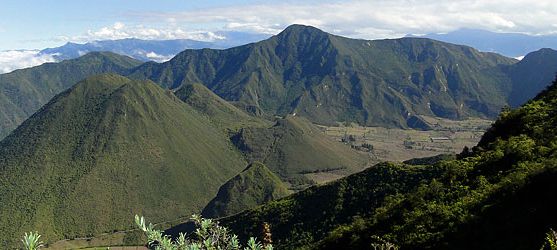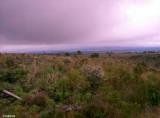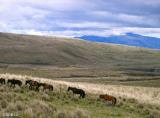Tourism in the Geobotanic Reserve Pululahua
Tourism in the Geobotanic Reserve Pululahua
Pululahua Geobotanical Reserve
Foto: pululahuahostal
Tourism Pululahua Geobotanical Reserve Quito, the Middle of the World and Calacalí.
Pululahua is a space and quiet near the city of Quito.
Within the park is the crater and volcanic caldera of Pululahua, the caldera measures about 4 kilometers in diameter.
You can see zagalitas, zapatitos, colcas, sigses, pumamaquis, wild taxa and allpa chocho, among others. A large number of bird species have been recorded, such as the black-breasted or pig eagle, the quilico, the blackbirds, the huiracchuro, hummingbirds and mountain guans.
Mammals are registered: páramo wolves and skunks, there are soches or small deer, squirrels, opossums and sporadic sightings of the spectacled bear.
CI
Other Natural o Protected Areas and Spots
Galapagos - Llanganates - Ilinizas - Chimborazo - Sangay - Yasuni - Cuyabeno - Machalilla - Cotopaxi
OTHER INTERESTING SITES
Here on the equinoctial line, the tourist center of the Middle of the World offers you different attractions. It is found with an interparroquial bus half an hour from Quito.
Mindo is a small town hidden in nature, ideal for vacations in nature.
Quito is the capital of Ecuador. The historic center of Quito is declared a World Heritage Site.
Gran Sumaco Napo Province Protected Areas
Cotopaxi Highlands Paramo Protected Area
Horses Cotopaxi National Park
The Pululahua, in Quichua "cloud of water", is located above an active volcano, which is why it has great mineral wealth and therefore its lands are very fertile and productive, which has made the place abundant. in crops, this is and has been in great demand for more than 500 years since here you will find numerous agricultural terraces.
It has trails and recreational areas, perfect for walking with the family while enjoying a spectacular view of the crater and caldera of the Pululahua Volcano.
In the Pululahua biological reserve you can practice trekking, cycling, horseback riding, camping, pinning and other adventure activities
So, if you are thinking of a place away from the hustle and bustle of the city, this is the best place for you since here you can be in direct contact with nature.
Pululahua Biodiversity
To all this, it is added that the Pululahua Quito is possessor of a great biodiversity, gift of the mother earth
.
More than 144 species of birds are recorded, such as the black-breasted hawk and several species of hummingbirds.
Mammals include páramo wolves, small deer, and armadillos.
Source: goraymi.com






